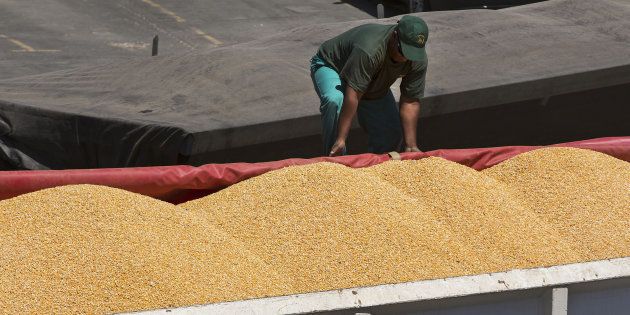
The most recent data from the US Department of Agriculture highlights a number of interesting dynamics in Southern Africa's maize production, with Zambia and Malawi becoming increasingly important players in the region's maize sector. Their 2017 production is set to reach 3,3 million tons, and 3,6 million tons respectively.
Zambia
For Zambia, this will be a record harvest in a data set starting in 1961. More importantly, it is 900,000 tons higher than annual consumption, which means the country will be a net exporter of maize this season.
Evidently, the government has lifted the maize export ban. Last month, Zambia's ministry of agriculture announced the sale of 100,000 tons of maize to East African markets affected by drought, particularly Kenya, Tanzania and Burundi. Given the strong demand here, there could be additional exports in the coming months.
Malawi
Malawi will have a 100,000 tons maize surplus this year, which could be used to supply the East African market and some neighbouring countries. As with Zambia, the government recently lifted its maize export bans, showing its willingness to participate in the regional maize industry.
Zimbabwe
Zimbabwe also has a good news story to tell this year, with the largest crop in 22 years. Data from the UN's Food and Agricultural Organization indicates that the country could produce 2,2 million tons of maize this year, up fourfold from 2016.
This substantial uptick can be attributed to a combination of factors, including an increase in area planted, good rainfall and government support through inputs. Zimbabwe's annual maize consumption is estimated at 2,2 million tons. Of that, 1,9 million tons is for human consumption, and 300,000 tons is for animal feed.
The improvements in the domestic production of Zambia, Malawi and Zimbabwe means that South Africa will not only experience a shrinkage in regional demand, but also new competitors for existing markets.
Therefore, if the forecast of 2,2 million tons materialises, the country could be self-sufficient this year. In fact, the government has already banned the importation of grain, indicating that it has sufficient supplies for domestic consumption, and wants to protect local farmers from the relatively cheap imports from South Africa.
South Africa
The aforementioned regional developments have serious implications for South Africa maize farmers, particularly those who produce white maize. For many years, South Africa's white maize market has been supported by increasing domestic, and regional, demand in Southern Africa.
Therefore, the improvements in the domestic production of Zambia, Malawi and Zimbabwe means that South Africa will not only experience a shrinkage in regional demand, but also new competitors for existing markets.
Moreover, South Africa is further disadvantaged as some African countries prefer non-genetically modified maize for importation. In fact, this is precisely the case in the Kenyan market, where the importation of genetically modified maize has been banned. Even with the current grain shortages on the back of the drought, the Kenyan government is still reluctant to adjust its regulations regarding genetically modified maize. This presents an opportunity for Zambia and Malawi.
